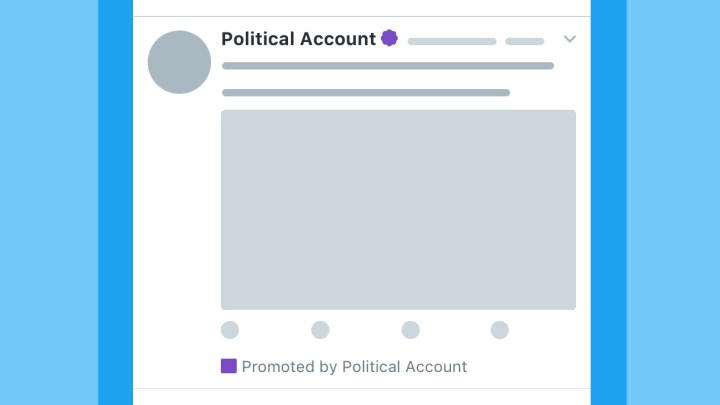
The Advertising Transparency Center is an industry first platform, Twitter says, aimed at exactly what the name implies: transparency in advertising. The Transparency Center will show users all of the ads currently running on Twitter, including ads that are only targeted to specific demographics. The data will also show how long those ads have been running and the “ad creative” or visuals in the ad.
Through the new center, users can also see which ads were targeted to them and why they fell into that demographic group. The option to say “I don’t like this ad” will also be included in order to help Twitter deliver more relevant ads and remove inappropriate ones.
While that data breakdown applies to every ad, political ads will see even more changes. Electioneering ads, or those that refer to a specific candidate or party, will be clearly labeled. By changing the look and feel of those ads, Twitter is hoping to make it easy for users to recognize political ads. Those posts will be marked at the top, as well as having a “Promoted by” descriptor at the end that lists which organization paid for the ad.
Inside of the Transparency Center, the data on political ads will be even wider than for ads as a whole. For political ads, Twitter will disclose how much was spent by that advertiser, any targeted demographics associated with the ad, and data about the advertiser’s past spending.
The name of an organization alone might not be enough to raise a red flag among users. Twitter says the Transparency Center will also include information about each particular organization. in August, Twitter shut down a fake Russian account pretending to be a Tennessee political party that went by the @Ten_Gov username.
Twitter will also launch stricter requirements on ad targeting and stronger penalties for violations. Advertisers who fall under the definition for electioneering will be required to self-identify that classification, Twitter says.
The Advertising Transparency Center will launch first in the United States, but Twitter says its plans to roll the feature out globally.
The announcement comes from three senators and two representatives across both the Democratic and Republican parties, who introduced the Honest Ads Act last week. If the act becomes law, all political ads on social media will be subject to the same guidelines as TV, print, and radio ads, which includes disclosing who paid for the ad and including spending information in a public database. The act came shortly after both Facebook and Twitter testified before Congress on Russian-bought political ads during the 2016 presidential election.



